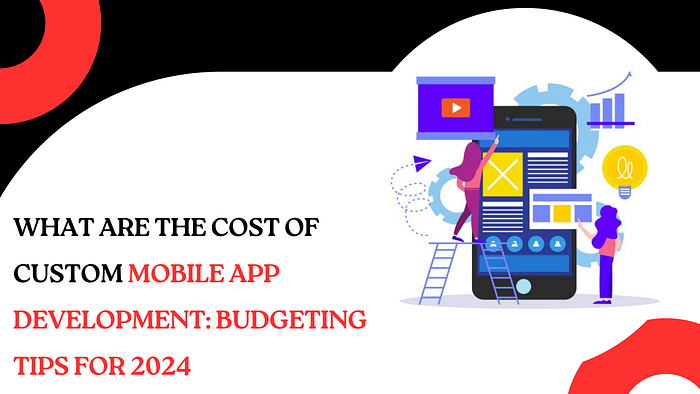
In the ever-evolving landscape of technology, mobile applications have become the cornerstone of modern business. With consumers increasingly reliant on their smartphones for various needs, the demand for custom mobile app development continues to soar. However, understanding the costs associated with this endeavor is paramount for businesses to plan and budget effectively. As we delve into 2024, RichestSoft, a leading player in the software development arena, offers invaluable insights and budgeting tips to navigate the intricacies of custom mobile app development.
- Scope Definition: Before embarking on the development journey, it’s crucial to define the scope of your mobile app project. Clearly outline your app’s features, functionalities, target audience, and platforms (iOS, Android, or both). A well-defined scope serves as the foundation for accurate cost estimation.
- Development Approach: The choice between native, hybrid, or cross-platform development significantly impacts the project’s cost. Native apps offer superior performance but tend to be more expensive due to separate codebases for iOS and Android. Hybrid and cross-platform solutions provide cost-efficiency by leveraging shared codebases, albeit with potential trade-offs in performance.
- Design Complexity: The intricacy of app design directly influences development costs. Simple, minimalist designs are generally more cost-effective than complex, intricate interfaces with custom animations and graphics. Prioritize user experience while ensuring design elements align with your brand identity and user preferences.
- Integration Requirements: Consider any third-party integrations necessary for your app, such as payment gateways, social media login, or APIs for data exchange. Integrating these functionalities enhances user experience but may incur additional development costs. Evaluate the necessity of each integration and its impact on the overall budget.
- Security Measures: In an era of increasing cybersecurity threats, prioritizing app security is non-negotiable. Implement robust security measures, including data encryption, secure authentication mechanisms, and regular security audits. While these measures add to development costs, they safeguard sensitive user data and mitigate the risk of breaches.
- Scalability Considerations: Anticipate future growth and scalability requirements when budgeting for app development. Building a scalable architecture ensures your app can accommodate increased user traffic and feature enhancements without significant redevelopment costs. Invest in scalable infrastructure and modular code architecture from the outset to minimize future expenses.
- Testing and Quality Assurance: Rigorous testing is indispensable to ensure your app functions seamlessly across various devices and operating systems. Allocate sufficient resources for comprehensive testing, including functional testing, performance testing, and user acceptance testing. Identifying and rectifying bugs early in the development process prevents costly rework post-launch.
- Post-launch Maintenance: App development doesn’t conclude with the launch; ongoing maintenance and updates are imperative to sustain app performance and relevance. Factor in the cost of regular updates, bug fixes, feature enhancements, and compatibility upgrades to maintain optimal user experience and retention rates.
By incorporating these budgeting tips into your custom mobile app development strategy, you can navigate the cost complexities more effectively and ensure a successful outcome for your business. RichestSoft stands ready to collaborate with you on your app development journey, leveraging our expertise and cutting-edge technologies to bring your vision to life within your budgetary constraints. Embrace the transformative power of mobile apps in 2024 and beyond, and empower your business to thrive in the digital age.
Comments
Post a Comment